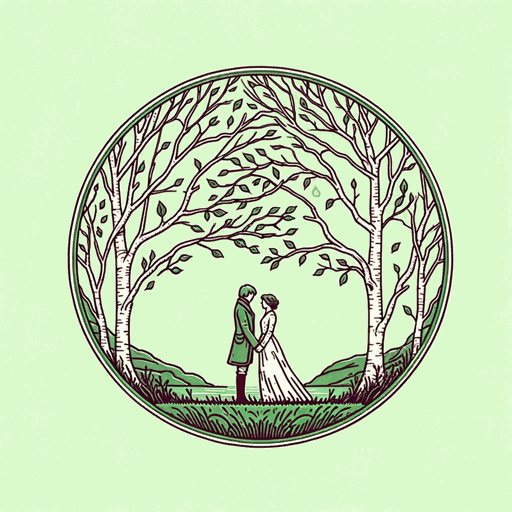18 pages • 36 minutes read
Robert BurnsHighland Mary
Fiction | Poem | Adult | Published in 1792A modern alternative to SparkNotes and CliffsNotes, SuperSummary offers high-quality Study Guides with detailed chapter summaries and analysis of major themes, characters, and more.
Poem Analysis
Analysis: “Highland Mary”
Burns begins his song to “Highland Mary” or Mary Campbell by describing the setting in which they used to meet. The first stanza paints the picture of the southern Ayrshire countryside with its riverbanks, “braes” (Line 1), or hillsides, and streams, all of which surround Montgomery Castle, where Mary Campbell worked as a dairymaid. The forests are always “green,” the flowers “fair” (Line 3), and the waters clear. Here, summer “first unfald” or unfolded “her robes” (Line 5), and here it stayed the “langest” (Line 6). In recalling his blissful relationship with Mary, Burns’s nostalgia colors his memory of Ayrshire, painting it as an idyllic paradise where summer came early and stayed late and where the lovers faced no obstacles.
The second stanza continues this theme of natural beauty, with a sense-rich description of the woods where Burns and Mary came together. Burns details the “gay, green birk” trees (Line 9), or birches, and hawthorn bushes blossoming and blooming above them and notes how the trees’ “fragrant shade” (11) sheltered and covered the lovers as he “clasp’d” Mary to his “bosom” (Line 12). These lines the senses of stress sight, smell, and touch, dwelling in the physical pleasure of spending time with Mary in the beautiful countryside.
Related Titles
By Robert Burns
Featured Collections
British Literature
View Collection
Grief
View Collection
Memory
View Collection
Mortality & Death
View Collection
Romanticism / Romantic Period
View Collection
Romantic Poetry
View Collection
Short Poems
View Collection
SuperSummary Staff Picks
View Collection
Valentine's Day Reads: The Theme of Love
View Collection




